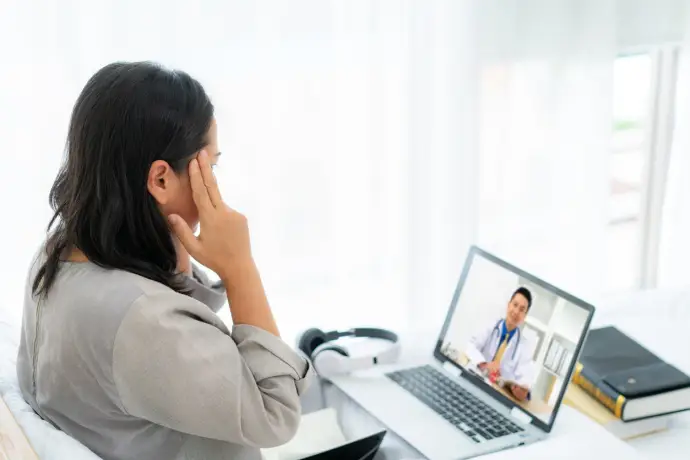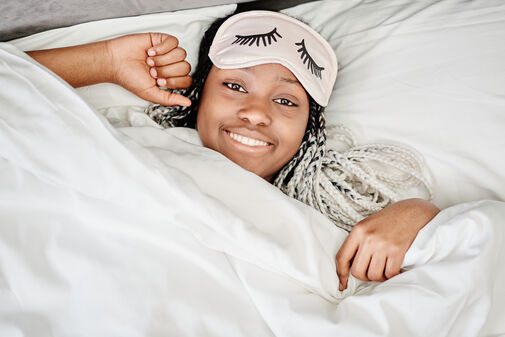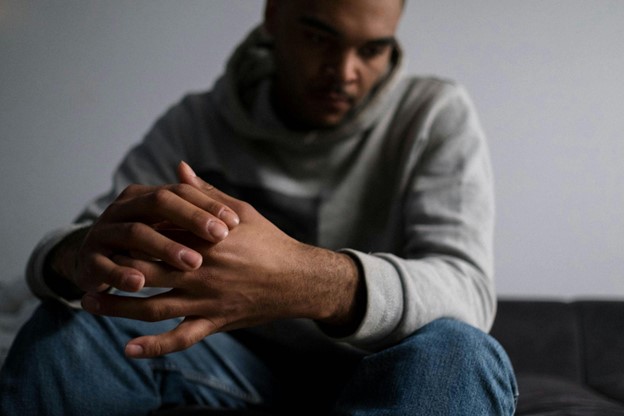The COVID-19 crisis affects everyone in one way or another. If you’ve been fortunate enough to avoid catching it, you probably know someone who hasn’t been so lucky. You’ve almost certainly had to stay home from gatherings, or an event you were planning on attending outright canceled.
For many workers, COVID-19 has produced the silver lining of being able to work from home. It’s shown us how realistic it is for companies to allow employees to work remotely. Of course, whether you see this as a benefit or a drawback depends on your perspective. But for people who suffer from migraines, it’s more likely to be the latter.
According to the Migraine Research Foundation, migraine is the world’s third most prevalent illness, affecting nearly one of every four households in the United States. It’s most common among people aged 25 to 55, which also happens to be prime workforce years for most of us. Add to that the fact that millions of workers are now required or urged to work remotely, and you have a dramatic increase in daily screen time. Having to rely completely on a computer screen all day — without “breaks” like intermittent face-to-face meetings and office banter — means migraines are on the rise. And that may feel to the world’s 1 billion migraine sufferers like another crisis.
A recent study commissioned by Axon Optics surveyed 500 US workers to better understand how the transition to working from home has affected the 39 million Americans who suffer from migraines. It’s already been well established that nearly 90% of migraine sufferers are sensitive to light — including light emitted from computers, tablets, TV, or phone screens. So with the rise in screen time, it makes sense that migraine attacks are also on the upswing.
Key Study Findings
For Those With Migraine, Remote Work Might Be a Real Pain
During the study, the migraineurs surveyed reported that increased home-based work has also increased the frequency of migraine attacks. Most respondents reported experiencing migraines up to 50% more often due to working from home.
Migraineurs Look Forward to Returning to the Office
It’s probably no surprise that in general, workers report they’d prefer to keep work-from-home policies in place even after the COVID-19 subsides. By contrast, migraineurs actually look forward to going back to the office. Why? Because it means more in-person interactions and fewer screen-based ones. In fact, more than 60% of people with migraine would rather return to the office, because it means less screen time than working from home.
Perhaps the only benefit of working from home for migraineurs is the ability to control workspace lighting. According to the study, 68% of people with migraine appreciate being able to control their own lighting while working remotely.
How to Mitigate Migraine-Related Discomfort While Working From Home
If you’re a migraine sufferer, working from home might be causing you more discomfort than working at the office. However, there are ways you might be able to reduce the frequency of your attacks and the discomfort you experience because of them. Fortunately, these suggestions don’t involve taking more pharmaceuticals.
Three Natural Ways You May Reduce Migraine Attacks
Get Adequate Sleep
Sleep disorders can contribute to migraines. Keeping track of your sleep habits as part of your migraine journal may help you identify whether poor or inadequate rest is a migraine trigger for you.
If it’s difficult for you to fall asleep or stay asleep, or if you tend to toss and turn, this may be a factor in your migraine condition. If you have this trouble frequently, I recommend talking to your doctor or a sleep specialist.
To improve the quality of your sleep, there are several things you can try right now:
- At least 30 minutes before going to bed, turn off your laptop, TV, and other devices. Turning them off an hour before bed is even better.
- As you are getting ready for bed, turn down the lights to reduce your exposure and prepare for sleep.
- Lower the temperature in the room and create a quiet environment; this can all help prepare your body for good quality sleep.
- Reduce or eliminate caffeine. If you can’t eliminate it altogether, at least avoid it after noon or 10am.
- Exercise regularly, preferably earlier in the day. Don’t exercise vigorously close to bedtime.
- Hydration is important, but try not to drink too close to bedtime or you may have to interrupt your sleep to use the bathroom.
Quality sleep can help you feel and function better, and it can even help minimize migraines. While sleep deprivation may trigger more attacks, a good amount of high-quality sleep may help prevent or quell a migraine.
Wear Therapeutic Lenses to Block Harmful Light
The definitive cause of migraine is still unknown. However, almost all people who suffer from migraine disease also report light sensitivity or photophobia. Many of those affected by photophobia report that light may be a migraine trigger for them — including the light from computer screens and other devices. If you’re like millions of others who are being exposed to more screen time due to working remotely, this could be a big factor in the frequency of your migraine attacks.
If light is a trigger for you, it may be tempting to keep the lights off, close the blinds, or wear sunglasses indoors. But living in the dark, avoiding fluorescent lights, or staying away from computer/phone screens isn’t a viable option. Just like when you leave a matinee movie and the sun hurts your eyes, avoiding the light or wearing sunglasses indoors can dark adapt your eyes and make you even more light-sensitive.
Fortunately for people with photophobia, not all wavelengths of light are problematic. If you can reduce just the harmful light you’re exposed to, you can potentially reduce the frequency and severity of your migraine, even when working from home.
Instead of sunglasses, try therapeutic lenses that are specifically intended for indoor use and block only the harmful parts of the light spectrum. Axon Optics develops and sells this therapeutic eyewear, designed to block the troublesome light while allowing as much good light through as possible. Over 700 migraineurs have worn Axon Optics lenses and recorded their results in the clinically validated HIT-6 survey, which measures the impact of their headaches over time. Nearly 90% of the wearers experienced a reduction in the impact of their headaches.
Find Ways to Manage Stress
Managing your stress level is important to helping your mind and body relax, which in turn can help you reduce migraine and the effects it has on your life. Practices like yoga, deep breathing exercises, and meditation may help you reduce tension and stress you relax. Specifically, try yoga postures designed to relax the head, neck, and shoulders.
In recent years, the benefits of yoga have proven valuable to migraine sufferers. In fact, for 10% of the migraineur population practicing yoga for migraine, it is having a big impact.
There are a host of yoga, breathing exercises, and meditation practices available on YouTube. Try them to see if they have an impact for you. Alone or combined with a more traditional migraine treatment plan, you may benefit from incorporating some of these practices into your lifestyle — including potential improvement in the frequency and intensity of your migraines.
Working From Home With Migraine
Even in this new normal, we are all experiencing due to COVID-19, increased migraine attacks don’t have to become a new normal for you. If you take other steps to reduce migraines in your life, you can help your body compensate for the increased screen time we’re all exposed to. And when you go back to work, keeping up with these steps could be even more beneficial.
Dr. Bradley Katz, MD, PhD, is a neuro-ophthalmologist and professor at the University of Utah Medical Center and founder of Axon Optics. Dr. Katz’s research expertise includes light sensitivity (“photophobia”) and neurologic conditions associated with light sensitivity, such as migraine and blepharospasm. He’s been featured in Parents, Prevention, Migraine Again, and Elite Daily.








Leave a Reply
You must be logged in to post a comment.